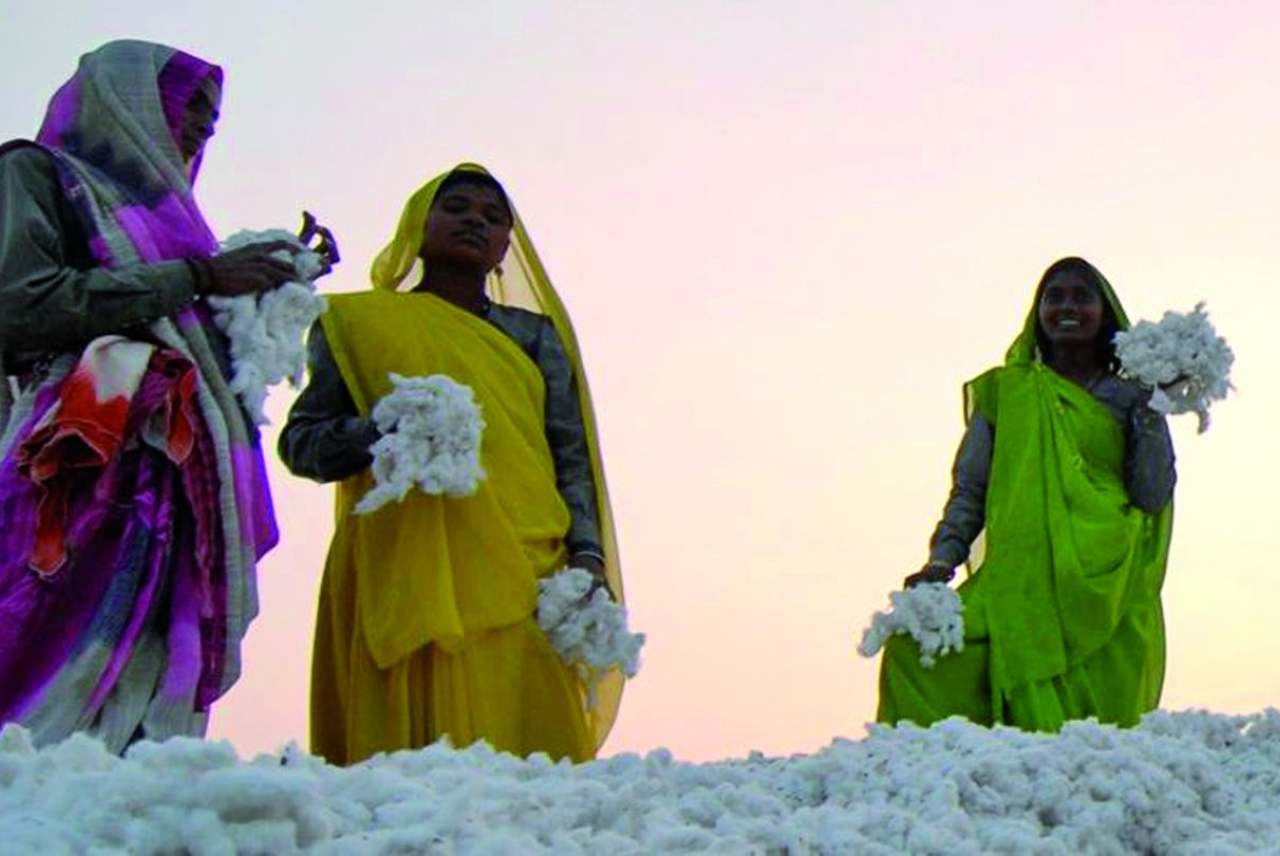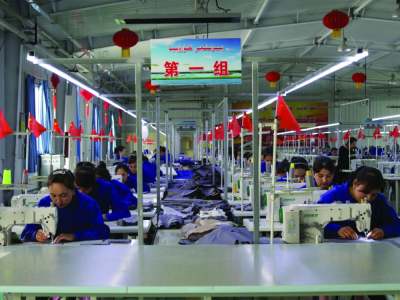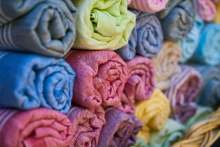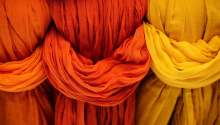Cotton makes up around a quarter of all fibres, and after polyester is the most widely used fabric in our clothing.
Cotton is the main source of income for around a billion people worldwide, including 100 million farmers. In fact, according to WWF, the industry “employs almost 7% of all labour in developing countries.”
However, the industry is also associated with many ethical issues – from forced labour to use of genetically modified seeds. It is also amongst the world’s thirstiest and most pesticide-intensive crops.
What is the water footprint of cotton?
Cotton is an incredibly water-intensive fabric. Just one cotton t-shirt will require around 2,500 litres of water to produce (depending on where it was grown).
That’s the same amount one person drinks in two and a half years.
As a crop, cotton usually needs to be irrigated in addition to rainwater, meaning that water is drawn from rivers, lakes and other sources, contributing to water scarcity and depletion.
In India, the water required to grow a year’s worth of cotton for export could supply over half of the population with 100 litres of water a day for an entire year. Meanwhile, over 90 million people - over 6% of India's population - don’t have access to safe water.
By comparison, hemp uses around 80% less water per kg than cotton.
The world’s dirtiest crop?
Cotton is said to cover 2.4% of the world’s cultivated land and yet uses 4.7% of the world’s pesticides and 10% of the world’s insecticides, more than any other major crop. This fact led the Environmental Justice Foundation to declare cotton the world’s ‘dirtiest’ agricultural commodity.
Chemical pesticides are a biodiversity problem and major driver of plummeting bird and bee numbers, as well as collapsing soil health. The majority of chemical pesticides are derived from fossil fuels, which therefore has climate change implications.
Genetically modified cotton
According to the International Service for the Acquisition of Agri-Biotech Applications (ISAAA), a non-profit pro-biotech organisation, genetically modified (GM) cotton accounted for around 90% of all the cotton in China, India and the USA - the world's top cotton producers.
Campaigners argue that GM cotton poses unnecessarily risks, about which little is understood. GM plants are designed to be more dominant than other kinds, meaning that when crossbreeding takes place, GM varieties can spread and wipe out native varieties. GM seeds are also often designed to be used with certain kinds of pesticides, locking farmers into toxic chemical use. In 2019, cotton used 4.7% of the world’s pesticides (and 10% of insecticides).
Farmers are also unable to save their seeds and can get locked into a cycle of debt, unable to cover the costs of the more expensive seeds and chemicals.
When rating companies for our shopping guides, if a company does not source 100% organic cotton or 100% Fairtrade cotton it loses half a mark under Ethical Consumer’s Pollution & Toxics and Controversial Technologies categories.






